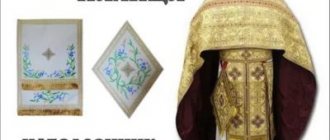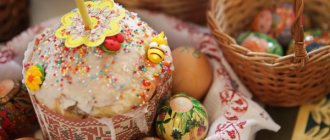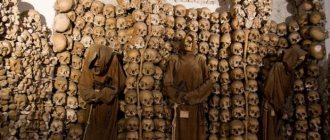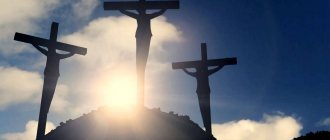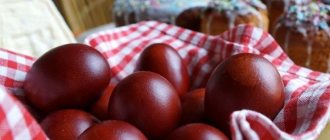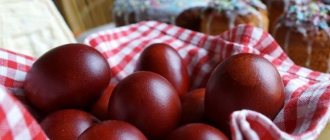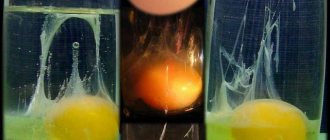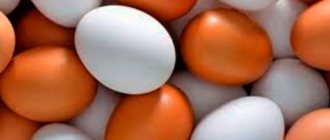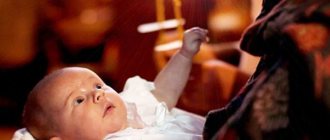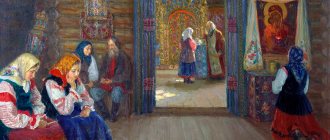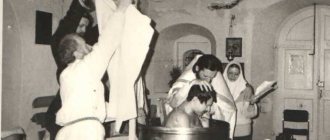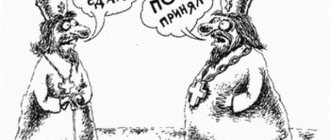Brightly colored eggs are an integral part of Easter celebrations. Where did the tradition of painting eggs come from, why and why do they paint eggs, what does the color of eggs mean? Many people have been asked these questions, but not everyone knows the answer.
It turns out that the tradition of painting Easter eggs has a long history and dates back to the birth of Christianity. In many cultures around the world, the egg is a symbol of new life, fertility and rebirth.
What does the Easter egg symbolize?
The egg serves as a symbol of the coffin and at the same time - a symbol of life. Painted with red paint, it commemorates the Resurrection of Christ and our Redemption “through the precious Blood of Christ, as of a lamb without blemish and without spot” (1 Pet. 1:18-19), the rebirth of believers in Christ. In addition to the fact that the red color indicates the blood of Christ shed on the Cross, it also marks the royal dignity of the Savior (in the east, in ancient times, red was considered a royal color). In addition, the color red symbolizes Easter joy and celebration. Thus, by giving eggs to each other and greeting each other with the words “Christ is Risen!”, Orthodox Christians profess faith in the Crucified and Risen One, in the triumph of Life over death, the victory of Truth over evil. It is assumed that in addition to the above reasons, the first Christians painted eggs the color of blood not without the intention of imitating the Old Testament Easter rite of the Jews, who smeared the doorposts and lintels of the doors of their houses with the blood of sacrificial lambs (doing this according to the word of God, in order to avoid the defeat of the firstborn from the Destroying Angel) (Ex. .12:7).
In ancient times in Rus', the red Easter egg was given a special mysterious meaning. Thus, in one Russian manuscript of the 16th century, the shell was likened to the sky, the inner film (“hymen”) to clouds, the white to water, the yolk to earth, the “dampness in the middle of the egg” (that is, its liquid state) to sin, and the thickening of the egg was compared with the destruction of sin through the shedding of the sacrificial blood of Christ and the Resurrection of Christ.
Dyeing eggs is a tradition from time immemorial.
The egg is a symbol of new life, rebirth and resistance to evil. In the past, they were even placed in graves to cleanse the dead of their sins. In ancient times it was a symbol of religious worship and was considered the beginning of everything.
Painting eggs is a pagan tradition. Many cultures place special significance on the egg. They were placed in Egyptian and Roman tombs as a sign of hope for a return to life. Other peoples attributed the rhythm of peace, sun and fertility to the egg;
Thousands of years ago, Iranians painted eggs for Nowruz, the Iranian new year, which falls on the spring equinox. In China they painted pictures of birds and flowers.
Folk tradition has preserved many legends based on gospel stories about coloring Easter eggs. One of them says that the first such eggs were presented to Pilate by the Mother of God to save Jesus from death.
According to another, Saint Magdalene, before visiting the tomb of Christ, bought eggs for the apostles’ meal. It turned out that after visiting the Holy Sepulcher, the eggs turned red. To this day, Easter eggs are painted in memory of this event. That is why for a long time they painted only red.
When, according to legend, did the tradition of painting eggs for Easter begin in Christianity?
The Christian tradition of painting eggs and giving them to each other at Easter (with the greeting: Christ is Risen!) dates back to ancient times. Tradition firmly connects this tradition with the name of Equal-to-the-Apostles Marina Magdalene, who, after the Ascension of the Lord, went to Rome, where she met with Emperor Tiberius and preached the Good News to him. It is alleged that she began her sermon with the words “Christ is Risen!” and presented the monarch with a red egg.
Easter symbols
An integral attribute of Easter, besides the eggs themselves, which we will talk about below, is Easter cake, which personifies our daily bread. It has a special value because it refers to the bread that Jesus Christ ate with his disciples. The letters “ХВ” are applied to it, which means “Christ is Risen” and give it a festive, bright look.
Depending on traditions, Easter cake can be replaced or supplemented on the table with Easter. This is what they call a cottage cheese pie. You don't need to bake it, but you will have to put some effort into preparing it. In Rus', housewives prepared food and all the corresponding Easter paraphernalia themselves.
In Europe, the Easter Bunny is closely associated with this holiday, which, according to legend, brings colored eggs to believers. There are several opinions about the connection between this animal and other paraphernalia. Indeed, in the spring, hares often ran into villages in search of food. They were not at all afraid of people. Godparents encouraged children to look with them in the garden or forest for eggs that the rabbit had painted and hidden. The exciting game has been passed down from generation to generation. The hare is considered the animal of the moon, and Easter is celebrated in the spring, on the first Sunday that falls on the full moon. In Byzantium, the hare was symbolically associated with Christ, and the animal’s fertility also could not be ignored; here they draw a direct connection with the beginning of a new life.
What colors besides red are acceptable for Easter eggs?
Over time, other colors became established in the practice of coloring Easter eggs, for example, blue (blue), reminiscent of the Kingdom of Heaven, or green, symbolizing rebirth to eternal blissful life (spiritual spring).
Nowadays, the color for dyeing eggs is often chosen not based on its symbolic meaning, but on the basis of personal aesthetic preferences and personal imagination. Hence the large number of colors, even unpredictable ones.
It is important to remember here: the color of Easter eggs should not be mournful or gloomy (after all, Easter is a great Holiday); in addition, it should not be provocative or pretentious.
What does cottage cheese cake symbolize?
Cottage cheese cake (“Easter”, or in the Old Slavonic version - “milk thickened”), in its truncated shape, resembles the coffin in which the Son of God rested before the miraculous resurrection, which delighted true believers.
A solemn holiday greeting (“Christ is Risen”) is inscribed on the top side of the delicacy. On the side parts there are images of a cross, spears, canes and other instruments of torture that forced God to suffer.
The filling is varied: housewives prefer to add nuts, raisins, powdered sugar, candied fruits, chocolate, and dried fruits.
The sweet dish replaces the sacrificial lamb, a traditional Jewish holiday dish. Since Jesus sacrificed himself for the good of humanity, blood cannot be shed. This is strictly prohibited. Cottage cheese cake can also be represented as a symbol of Jerusalem, the city where the Savior was born and executed.
It is known that ancient pagan rituals associated, for example, with the onset of spring, were accompanied by the obligatory consumption of cottage cheese and other dairy products.
For ordinary people, this food was considered a delicacy and was not available on ordinary days. With the emergence of the Orthodox faith, things changed.
Initially, delicacies, symbolizing the pursuit of ideals, were prepared from fermented sour milk. Later it was decided to use hard cottage cheese, cream or margarine.
Many ancient cultures deified buildings resembling truncated pyramids. According to immortalized legends and mystical considerations, this made it possible to concentrate immeasurable power, subject only to angels.
Is it possible to paint Easter eggs?
This is not a sin. Different peoples have preserved the ancient tradition of painting Easter eggs to varying degrees. In the old days, there was even a special terminology to denote the differences between painted and painted eggs: painted eggs - fully painted eggs; Easter eggs are eggs painted with plot and ornamental patterns. Eggs with a pattern of stripes, spots and specks were called specks. At the same time, the most common method of coloring eggs, perhaps, was and remains the method using onion peels.
Using wax pencil for decoration
If you have a wax pencil, then use it. It is, of course, more convenient to use.
- If you don’t have drawing skills, sketch a sketch of the future pattern with a pencil
- Instead of a pencil, you can use wax. Take a candle and use melted wax using a toothpick or match to apply a design to the surface.
- Then we paint in the usual way with natural or food dyes. Just don’t use hot liquid, otherwise the wax will melt. We get a wonderful pattern. Melt the wax with a candle or carefully scrape it off.
Is it possible to decorate Easter eggs with stickers with icons?
Currently, various types of stickers and thermal film are used to decorate Easter eggs, often equipped with images of Jesus Christ, the Virgin Mary, Angels, saints, and temples. This practice is often criticized in modern Orthodox journalism as a profanation of the sacred, since after a short time these images will most likely become part of household garbage. It is necessary to take into account: an icon is not a picture; this is a Christian shrine. And it should be treated exactly like a shrine.
Types of natural dyes
- Onion peels - from yellow to brown, depending on the strength of the broth.
- Blueberries range from blue to deep purple.
- The bark and branches of the cherry tree are red.
- Turmeric ranges from pale yellow to deep orange.
- Birch leaves, strong tea or coffee are painted brown.
- Leaves of nettle, spinach, parsley - green.
- Beetroot is a permanent dye that will impart all shades of beetroot, from pink to deep red.
- Red cabbage, contrary to logic, will turn the shell blue.
- Dark grape juice is purple in color.
And there are many other plants that contain one or another natural dye - carrots, paprika, raspberries.
How to bless your own eggs for Easter?
There is a tradition of blessing Easter eggs (together with Easter cakes and cottage cheese). In the Russian Orthodox Church, consecration is accompanied by a “prayer to bless cheese and eggs” (that is, for the consecration of cheese and eggs). You can bless the eggs yourself, using a secular rite. To do this, before the Easter meal (eggs, Easter cake, Easter), you should sing the Easter troparion three times: “Christ is risen from the dead, / trampling death over death, / and giving life to those in the tombs,” then sprinkle the food with blessed water (if any) with the words: “In the name of the Father and the Son and the Holy Spirit. Amen".
Sources:
- Levashev P.N. The custom of eating red eggs on Easter / P. Levashev. - SPb.: type. Katansky, 1895. - 8 p.
- Lebedev P. Ya. The science of worship of the Orthodox Church: In 2 hours / Comp. Rev. Moscow spirits Seminary Peter Lebedev. — 3rd ed. - M.: book. magician V.V. Dumnova, p/f inheritance br. Salaev, 1890. - 352 p.
- Easter, Christian holiday // Encyclopedic Dictionary of Brockhaus and Efron: in 86 volumes (82 volumes and 4 additional). - St. Petersburg, 1890-1907.
- Korinfsky A. A. People's Rus': All year round Russian legends, beliefs, customs and proverbs. people. - M.: M. V. Klyukin, 1901. - 724 p.
- Follow-up on the Holy and Great Week of Easter and throughout Bright Week. - M.: Publishing House of the Moscow Patriarchate of the Russian Orthodox Church, 2012. - 176 p.
Interesting Facts
- The Easter egg symbolizes the tomb of the Son of God. Its shell is hard and impenetrable, but inside there is eternal life, which no one can cut off. The constant holiday attribute was used as a talisman, brought fertility and was given to the dead as a last gift.
- The traditional Easter symbol among Catholics, who celebrate the holiday several weeks earlier than Christians, is the rabbit. Children believe that if their behavior is impeccable, the animal will definitely come before the celebration and bring magical eggs. Figurines of such a mascot are usually made from marzipan, chocolate, clay, wood, and papier-mâché.
- In Sweden and Finland there is a difficult custom among girls. They dress up in rags and scarves, introducing themselves as witches, after which they begin to collect treats. This tradition is not accidental: in the old days it was believed that on Thursday before Easter, witches gathered on Mount Blokula, who later moved to the cities and frightened people. They were scared away with fireworks, which is still a kind of ritual.
- In Jerusalem, before the start of the Easter celebration, the Holy Fire is certainly lit. It symbolizes hope and prosperity. Anyone who is innocent and despises crime can touch it in the first moments and not get burned. So the Savior warns that even incorrigible sinners have a chance to repent and prevent fatal mistakes within a year. If the flame does not go out, a catastrophe will occur and the world will be plunged into darkness.
- In Mikhail Bulgakov’s legendary novel “The Master and Margarita,” a work with sacred and mystical overtones, the plot takes place during Holy Week. Creation ends with the mention of the Easter celebration.
- The custom of celebrating Easter appeared among the Jews and was put into practice before the rebirth of the Savior became known. They celebrated being freed from the oppression of the fierce Egyptian invaders, and in honor of this they held long feasts. Traditional sacrifices began to be performed after those who wanted to seize power tried in a similar way to soften the wrath of the Lord and avoid cruel punishment. The dish left for him was, as a rule, a killed and roasted kid or lamb. Later the holiday was dedicated to the resurrection of the Son of God. Christians believed that faithful prayers would always be heard. The Almighty helps everyone who turns to Him.
- In countries such as England, France and the USA, it is not customary to paint or decorate eggs with patterns. They are made from chocolate, sugar, vanilla or butter dough. Traditional foods are themed pastries and cakes, rather than the usual Easter cakes.
- Some countries have an unusual tradition. The townspeople burn the straw effigy of Judas, who mercilessly betrayed Jesus Christ. This ritual is similar to the technique practiced on Maslenitsa. The only difference is that in the second case, the custom implies farewell to winter hardships.
Easter celebrations are not complete without mysterious beliefs and interesting riddles. You need to know about the required attributes to make the celebration a success.
In the end, faith was able to finally strengthen only after it had passed through centuries. We must remember this and honor the memory of those who ensured well-being for those living today.
